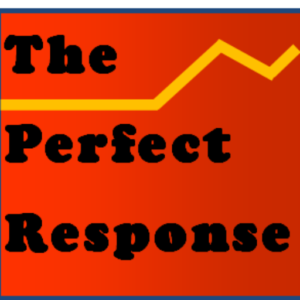 Organizations often talk about the value of finding employees with “soft skills,” meaning abilities to communicate and work well with others. This is not a given. In fact, current media use patterns have lessened the chances that younger Americans will need repair their initial instincts to be other-centered. Here are some questions that explore some of the dimensions of these attributes. The questions represent general patterns, with room for individual exceptions. How many did you correctly guess?
Organizations often talk about the value of finding employees with “soft skills,” meaning abilities to communicate and work well with others. This is not a given. In fact, current media use patterns have lessened the chances that younger Americans will need repair their initial instincts to be other-centered. Here are some questions that explore some of the dimensions of these attributes. The questions represent general patterns, with room for individual exceptions. How many did you correctly guess?
1. If I am with a work colleague and my phone rings, a reasonable course of action is to pause our conversation, offer a brief apology, and take the call.
2. Prior to a meeting of a work team you will lead, it’s a good idea to send around a brief agenda of items to be considered.
3. It’s ok to leave your phone on and in sight during a committee meeting, especially if it is in a silent mode.
4. Video meetings on Zoom or other services can be just about as good as meetings that happen in the same room.
5. In a meeting of colleagues it is probably better to call out someone’s mildly offensive comment immediately, rather than pointing it out to them later in private.
6. It is probably a waste of time to ask member in a new taskforce of 10 to introduce themselves before a meeting starts.
7. You have a meeting with your team. One member often contributes too much and pulls the group away from the subject at hand. Assuming everyone fits around a rectangular conference table, where is the ideal place to ask that person to sit?
- A. Along the table length.
- B. In a chair opposite the leader at the other end of the table.
- C. It does not matter.
8. A problem-solving group will usually make better decisions if the boss is also in the room.
9. Generally, the human efficiency curve for most individuals increases throughout the workday.
10. The best way to prepare for remarks that you must give to a room of colleagues is to write out what you want to say so that they can be read back clearly in your presentation.
11. Being anxious before a presentation is normal and usually helpful.
12. In research on gender differences and communication
- A. Women are more likely to favor asking for clarifications or raising questions.
- B. Men are more likely to favor stating their opinions on a topic.
- C. Neither are true.
- D. Both are true.
13. Withholding making a final decision in a meeting because differences remain is most clearly associated with
- A. Quakers
- B. Catholics
- C. Lutherans
14. Working in a group is likely to increase the chances that there will be dissenters who will oppose an emerging group consensus.
15. Job reviews and terminations are rarely easy for managers or employees. Even so, it is acceptable to deliver negative evaluations or separation to an employee without necessarily meeting them in the same space.

Answers:
1. B. No. Something in our nature leads us to imagine an urgent message waiting in an unanswered call. But rarely do calls deserve such priority. The person(s) in your presence should be considered first. They deserve your undivided attention.
2. True. With a few exceptions it is a courtesy to all of the meeting participants to indicate the focus of the meeting. They may want to prepare. Or they might appreciate the chance to look over materials that will be considered in the meeting. It borders on the rude to spring a significant surprise on group members, if the meeting is to gain their input.
3. False. Leaving your phone screen on and in sight of others is a distraction to you and communicates your view that you may soon have something better to do. Ditto for laptops, which have turned into common props used to fake meeting-related work. New messages and e-mails can wait. Since we do not multitask well, give your attention to those in the meeting. If you feel like you really don’t need to be there, simply excuse yourself.

4. False. Zoom and its counterparts are useful. But because they are mediated through limited images and often poor sound, they represent a degraded way to connect. The inconvenience of being in the same space is often offset by the added communication information received when you see a whole person.
5. False. A seriously egregious comment may need an instant response, but a comment made in innocence or ignorance rather than with malice can be better addressed privately. And forget the urge to do some virtue signaling. Criticism of another in public usually means a loss of face and defensiveness for the person that receives it. In private, the offending comment can be corrected without inflicting the deeper harm of a more public reprimand.
6. False. It is worth the time to ask members who may not know each other to introduce themselves, if their comments are brief. Our identity is affirmed in our name. It will also be possible for more of the business that transpires to be done on a first-name basis.
7. A. A rectangular table has power positions and weaker locations. On a corner side a constant contributor might be reined in by not having easy eye contact with all members of the group. That may ease their urge to dominate. The power positions are at the two ends of a table. Everyone can see people in these locations.
8. B. False. There can be extraordinary circumstances where the boss is needed to supply crucial information, but case studies suggest that participants in a meeting are more forthcoming with new ideas without concerns about pleasing the boss or guessing their preferences.
9. B. False. Count yourself lucky if this pattern cited in the question fits you. In fact most are less productive toward the end of a routine workday. A mid-afternoon “slump” is common.
10. B. False. A good rule of public speaking is to prepare notes for what you intend to say, but to stop short of preparing a manuscript to read to a group. Most of us are boring readers. We are usually more interesting when we amplify ideas we have prepared as talking points worded in what feels right in the moment. Most of us can be good at this type of extemporaneous speaking, which more closely duplicates natural conversation. But few of us have the skills of actors to breathe life into a prepared script.
11. A. True. What researchers call “communication apprehension” is common and can be useful. An extra shot of adrenaline can make you more motivated to succeed and perhaps even more animated. But repress the urge to remind your audience of your jitters. They will want to hear what you say more than they want to hear about your fears. Focus on the message, not yourself.
12. D. Both A and B are true. In settings where there may be some differences of opinion, some research indicates that men are most comfortable affirming what they believe. On the whole, women will seek ways to bridge differences in belief.
13. A. Quaker traditions value reaching a consensus before proceeding with an action. If doubts among a group exist, they would be less likely to force a vote that will end in a divided result. This is a worthy goal for any group, if not always possible.
14. B. False. With exceptions, groups tend to exert pressure on “dissident” members to accept the thinking of the majority. In some classic studies this is known as “groupthink.”
15. False. Of course it is possible to fire someone via some medium. But it is usually a cruel communication choice. When at all possible, life-altering decisions affecting an employee should be delivered face to face.




 Organizations often talk about the value of finding employees with
Organizations often talk about the value of finding employees with 
